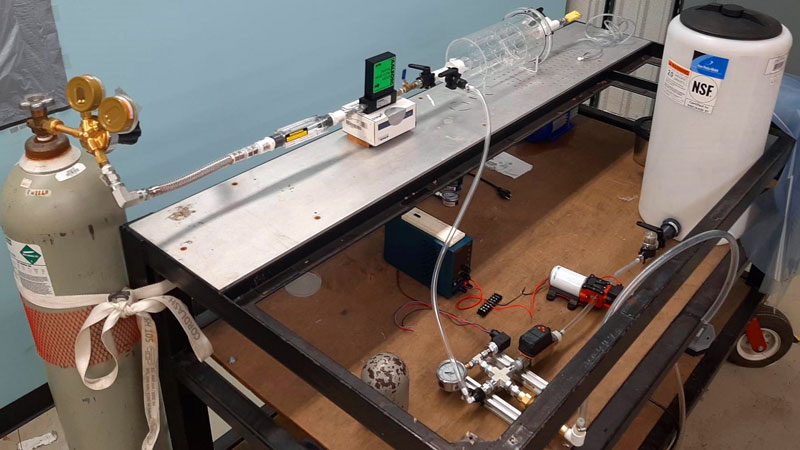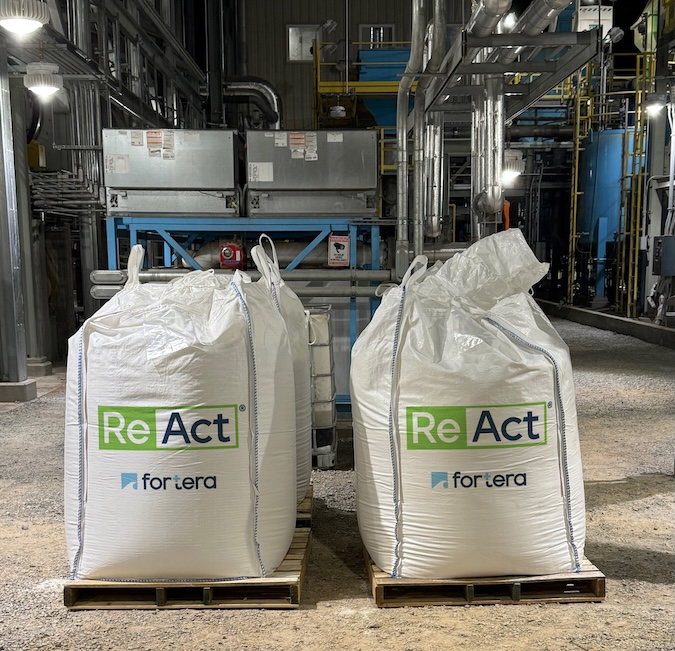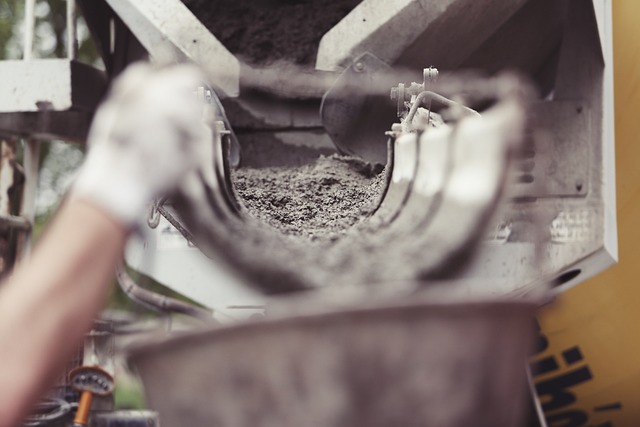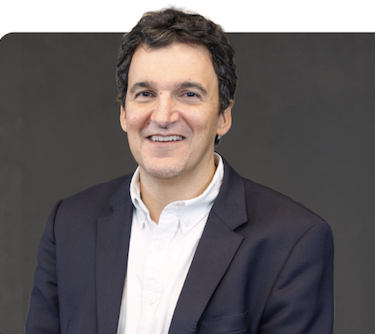A Purdue University Civil Engineering Department team reported promising early test results from a method mineralizing the carbon dioxide gas in cement production or other industrial process emissions.
“Researchers around the world are working on technologies to capture carbon dioxide from the atmosphere,” said Assistant Professor Mirian Velay-Lizancos. “But why not capture it at its source – at the factories where it would otherwise be ejected into the atmosphere?”
With help from Kenninger Professor of Renewable Energy and Power Systems Luciano Castillo and biological engineering doctoral candidate Antonio Esquivel-Puentes, she built a prototype assembly to test a theory of CO2 capture at industrial scale, where air rich in the greenhouse gas is injected into a reactive aqueous solution-bearing reservoir, then reacts with insoluble hydroxides to form carbonates that precipitate at the reservoir base.
“Some carbonates, such as calcium carbonate, are actually very useful by-products,” observed Esquivel-Puentes. “Cement plants use it as raw material at the beginning of their manufacturing process. So, this process could provide a double benefit: Reducing their CO2 emissions and their need to mine for new calcium carbonate.”
“This technology has already received significant interest from industry partners,” added Professor Velay-Lizancos. “It’s our hope that it will lead to a more sustainable future for all.”




